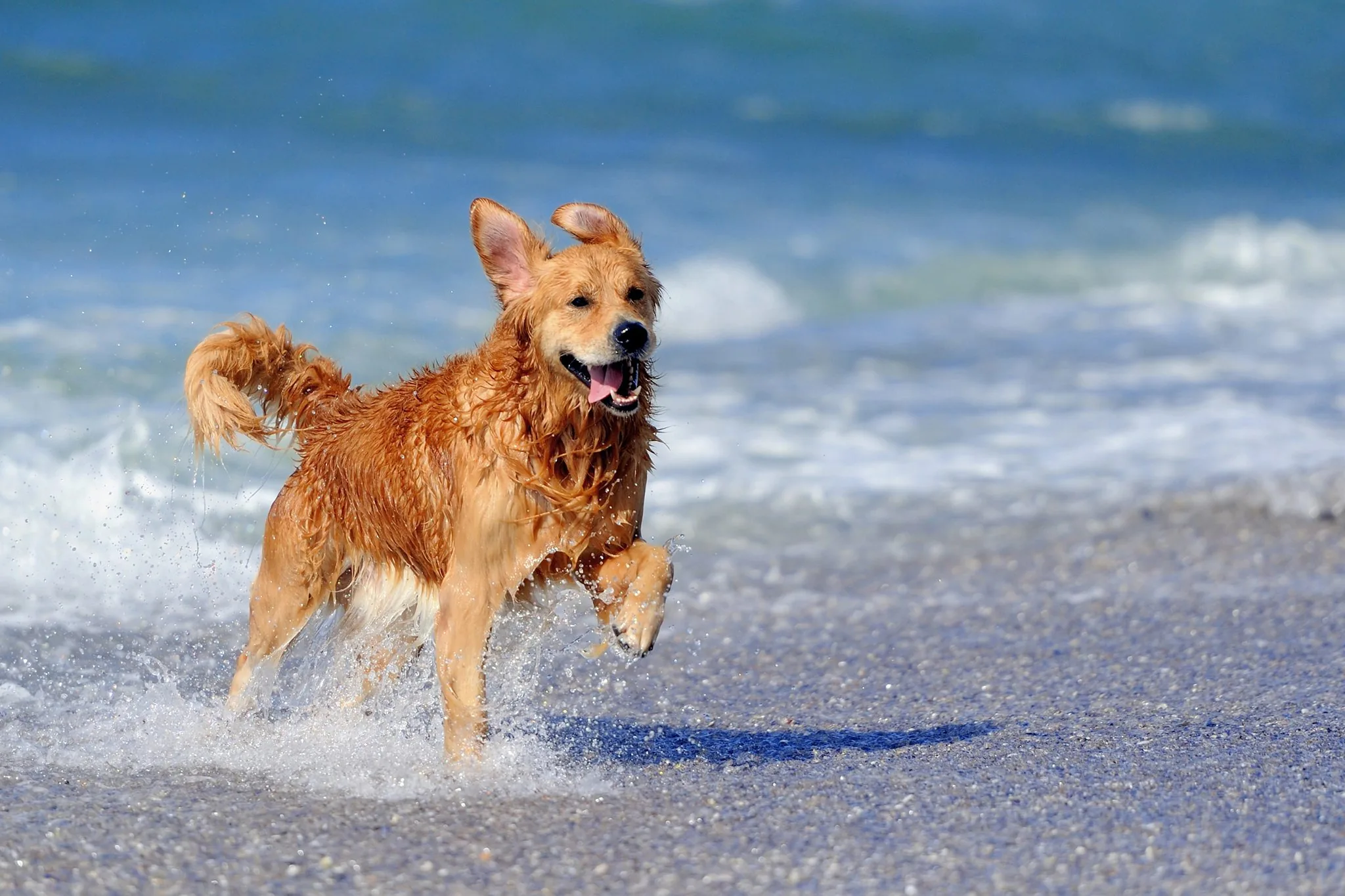Beach Safety for Our Pets

A trip to the beach can be enjoyable for both you and your pet, but is it safe? Beach environments may pose more risks and dangers than many pet owners are aware of. Fortunately, there are simple precautions you can take to ensure your pet stays safe while you both have a great time.
Preparations
Before heading to the beach with your dog, check the local regulations, as not all beaches permit pets. Some beaches may allow dogs during the off-season but have restrictions during the summer.
It’s also crucial to find out whether your dog must be on a leash or if they can roam freely. Always bring a long leash, but know in advance if there will be an area where a leash isn’t necessary. If off-leash areas are available, ensure your dog is under voice control. Be mindful of other beachgoers, including children who may be afraid of dogs, to avoid any mishaps.
Never leave your dog unattended. Even well-trained dogs can get distracted. Pay close attention to your surroundings and potential situations that might cause your dog to wander off. Follow all beach rules to ensure dogs remain welcome in the future. The safety of a particular beach depends on various factors, including the type of pet, whether it’s a river, lake, or ocean, recent weather conditions, the time of year, and how busy the beach is during your visit.
Visit the beach when temperatures are mild and the weather is calm. In winter, if the temperature is too low for you to be outdoors without extreme layers, it is too cold for your pet. Similarly in summer, if the sand is too hot for you to walk on barefoot, it is too hot for your pet and may cause painful burns.
Be Wary of Temperature Extremes
Depending on where you are in the country, summer at the beach can bring about two extremes: heat from the sun and a cold, cold ocean. Pay attention to how your dog is acting and responding while he’s with you throughout the day, since there could be the potential of either heat stroke or hypothermia.
Some signs of heat stroke in a dog include:
- Rapid panting
- Bright red tongue
- Thick, sticky saliva
- Weakness
- Vomiting
- Diarrhea
If you think that your dog has heat stroke while you’re at the beach, take the following actions immediately:
- Move the pet into the shade and apply cool (not cold) water all over their body to gradually lower their temperature.
- Apply ice packs or cool towels to the pet’s head, neck and chest only.
- Allow the pet to drink small amounts of cool water or lick ice cubes.
- Then take your pet to the nearest vet.
Some signs of hypothermia in a dog include:
- Lethargy
- Weakness
- Shivering
- Muscle stiffness
- Difficulty breathing
- Fixed and dilated pupils
If you think that your dog has hypothermia while you’re at the beach, take the following actions immediately:
- Wrap your dog in towels and blankets that have been warmed by the sun.
- Bring extra fresh water in bottles and leave them out in the sun as this warm water can be applied to your dog to bring his body temperature back up.
- If your dog has still not stopped shivering and has continued lethargy, bring your pet to the nearest vet.
As much as we wish, our dogs can’t tell us when they’re in pain and not feeling good. The above lists are certainly not all-inclusive, so if you notice anything out of the ordinary with your dog’s behavior, get him out of the elements immediately.
A few ways to prevent heat stroke is to bring lots of fresh, cool water that they can drink. A spray bottle with cool water that you can spray him down with will also help in temperature regulation. A bonus of having fresh water with you is that you can also clean the sand and salt water from his paws, which can cause irritation and dry out those sensitive pads. Also, since you can’t guarantee that you will have access to a shady area, bring an umbrella that he can hang out under.
To make sure that hypothermia doesn’t strike, bring lots of towels that you can snuggle him in and remove the excess cold salt water. Not only can this warm him up quicker, it also helps in removing the sand and salt water from his fur so he won’t be in danger of shaking off on someone else.
Water
Pets playing in the water can risk drowning due to water depth, currents, rip tides, and unexpected waves. If you’re unsure about the water conditions, avoid letting your pet play in the surf or jump into lakes. Stay vigilant if your pet enjoys playing fetch in the water, as floating debris can entice them to dive into potentially dangerous waters.
Swallowing saltwater can also cause toxicity, and immersion or splashing can irritate eyes and sensitive membranes. Ingesting a small amount of seawater is usually harmless if freshwater is available, but swallowing too much can lead to serious dehydration. Look for signs such as vomiting, thick saliva, and dry, tacky gums. If your dog shows signs of severe dehydration, like vomiting and difficulty walking, seek immediate care.
If your pet will be in the water, equip the animal with a life vest suitable for its breed, size, and weight. Even if you intend to stay close to shore, a pet playing in the surf or at the edge of a river might fall in and get caught in a dangerous riptide or swift current.
Wildlife
Many different animals visit water sources, and pets could be at risk from attacks from a number of wild visitors, including bears, mink, raccoons, or muskrats. Ocean beaches may also harbor jellyfish, stingrays, or shallow-water sharks that can threaten pets.
Pollution
Litter and pollution can be hazardous to pets on beaches. Discarded fishing hooks or tangles of fishing line, broken glass bottles, rotten food, and other materials can cause injuries or illnesses. Oils or spilled chemicals can also coat pets and cause toxic contamination.
Getting Lost
Before you visit any beach, no matter what hazards it may pose, check local laws about when, where, and how pets may be allowed on the beach. Many public beaches do not permit pets, while others may have the time or seasonal limitations on when pets can visit. Leash laws, restricted zones, and pooper scooper laws can all be in effect on the beach, and pet owners should conscientiously follow all local ordinances to keep their pet, and themselves, safe from any fines, fees, or other legal action.
A crowded beach can be exciting for a pet, but it can also be disorienting. If a pet gets confused it may become separated from its owner and be lost in the crowd, unable to find its way back. Always keep updated identification tags on your pet, and have the animal microchipped in case any collar or tags accidentally come off. This can help you be reunited with your pet quickly and easily in case they are lost.
Clean up Afterward
Carefully rinse your pet with clean, fresh water after a visit to the beach to remove any sand, dirt, or microorganisms that can be uncomfortable or dangerous. At the same time, clean up after your pet so no other beachgoers stumble across their messes.
Visiting the beach can be a great experience for both you and your pet, and by being aware of potential threats at different beaches, you can be sure it is a safe experience as well.
Share This Post
Recent Posts
About Shallowford Animal Hospital
Shallowford Animal Hospital and The Pet Spa at Shallowford are dedicated to the exceptional, compassionate care your pet deserves. Pets hold a very special place in our families, and we treat yours like our own.



